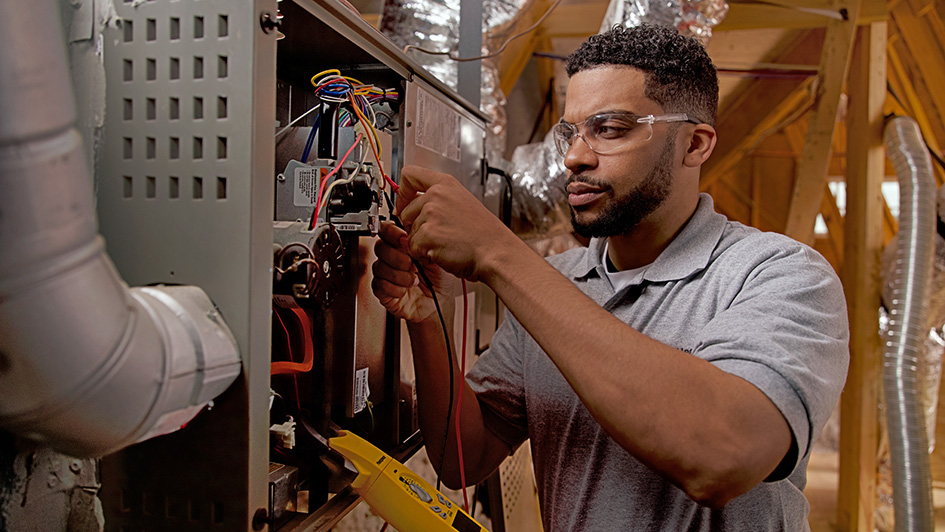
A furnace is usually a background player for your home, ensuring you're warm in the cold winter months. It regularly won't be noticed until something goes wrong.
One cause could be that your furnace has a cracked heat exchanger. It’s a potentially dangerous issue, so it’s critical to know the symptoms of a cracked heat exchanger and what you should do if you believe that is the problem.
What Is a Heat Exchanger in a Furnace?
A heat exchanger helps move heat from the combustion chamber inside your furnace to the air that moves inside the ventilation. It usually handles this through coils or tubes that heat the air while functioning as a barrier to keep byproducts created in the combustion chamber, called flue gasses, from escaping out into your home.
Is a Cracked Heat Exchanger Dangerous?
Because of its central role, it shouldn't come as a surprise that a cracked heat exchanger can be very dangerous. A damaged heat exchanger can allow dangerous gasses – such as carbon monoxide, which can be lethal – to be distributed across your home.
For this reason, never run your heating if you suspect it has a cracked heat exchanger, as letting it run could make your entire family sick. Call an HVAC professional immediately if you believe your heater has a cracked heat exchanger that needs to be repaired.
Four Symptoms of a Cracked Heat Exchanger:
- Furnace shuts off: A crack in your heat exchanger may cause your furnace to turn off.
- Unusual Smells: If the air leaving your furnace has an intense chemical smell, it could be evidence gas is seeping through cracks in your heat exchanger. These gasses, which will often smell like formaldehyde, are a major warning sign.
- Carbon monoxide alarm goes off or you notice symptoms of poisoning: If a cracked heat exchanger is releasing carbon monoxide inside your home, your carbon monoxide alarm should go off or household members might experience signs of carbon monoxide poisoning. Side effects include headaches, dizziness, weakness, nausea, vomiting or feeling sleepy. If an alarm goes off or you feel sick, get out of the home immediately and then call for help.
- Soot: If you find black sooty buildup on the exterior of your furnace, it’s an indication something could be seriously wrong.
What to Do if a Furnace Heat Exchanger is Cracked
If you believe your furnace has a cracked heat exchanger, hire a professional with extensive experience in furnace installation Bend right away so they can inspect your system and, if needed, handle a furnace heat exchanger replacement. Costs will fluctuate depending on the situation, but estimates run in the neighborhood of $1,000 to $3,000.
Fortunately, the good news is that heat exchangers are often included in the warranty. You should confirm the warranty paperwork on your furnace, since while the warranty may not cover the entire cost of repairs, it still may significantly reduce your bill.
How to Avoid a Cracked Heat Exchanger in Your Home
One of the most convenient ways to avoid problems in your furnace overall is with regular furnace maintenance. Furnaces provide the best possible return on investment when they operate efficiently. Hiring a trained professional to examine your furnace for broken-down parts, dirty filters and other likely problems can keep you from getting a big bill later on.
It’s also helpful to take a look at your furnace filters every few months – it’s encouraged some filters be changed every 90 days or sooner if they are dirty or grimy. While the filters are not part of the heat exchanger itself, the strain of drawing air through a clogged filter makes the entire furnace work more vigorously to do its job. And the harder your furnace needs to run, the more wear and tear pieces like the heat exchanger will endure.

